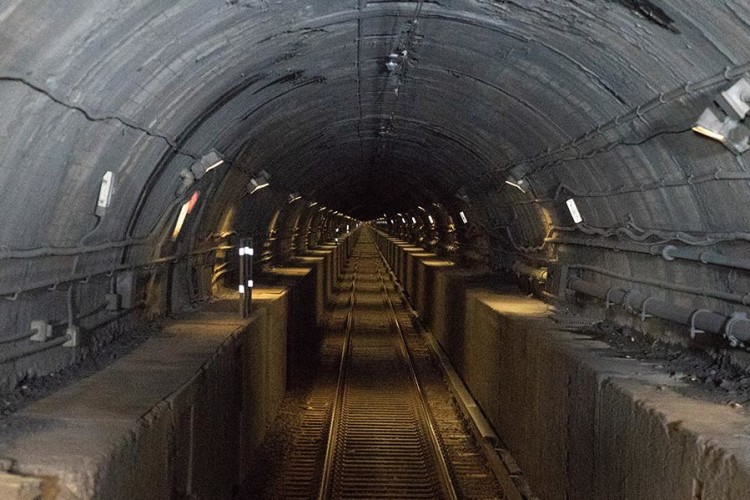The L Train Tunnel’s electrical systems were severely damaged by saltwater ingress caused by Hurricane Sandy.
The city’s Metropolitan Transportation Authority has accepted the plan put forward by the panel, which was convened by state governor Andrew Cuomo.
The new repair methods can be carried out at nights and weekends only, with a single tube providing continued service during work periods.
Last month, Cuomo had toured the L Train's Canarsie Tunnel with the engineering experts, including leadership from Cornell University's College of Engineering and Columbia University's Fu Foundation School of Engineering & Applied Science and input from consultants.
“I can't tell you how many people have approached me about the L train and the difficulties that the L train closure would trigger,” said Cuomo. “Now, the MTA has done a very good job, the city has done a very good job in trying to alleviate the problems with the L train closing. A lot of people worked very hard and I applaud them. But the simple fact is: you have roughly 250,000 people who would need another way to get to work. That is going to have a tremendous impact on traffic, et cetera. 15 months sounds like a relatively short period of time. It's not if you're doing it one day at a time trying to get to work.”
He convened the expert panel to look at the L train situation, with no predisposition. “And I asked, review the plan, look at it with fresh eyes, no assumptions, no givens,” he said. “If you have any positive suggestions as to how we could make it better, great. If you say, they're doing it the best way possible, that's great too.”
“They have proposed a new design to use in the tunnel,” he said. “It is a design that has not been used in the United States before, to the best of our knowledge. It has been implemented in Europe. It has never been implemented in a tunnel restoration project. They came up with that design suggestion. It uses many new innovations that are new to, frankly, the rail industry in this country. But the MTA has gone through their recommendations and gone through the new design, and the MTA believes that it is feasible.”
The L Train Tunnel is about a mile and a half long and is over 100 years old. It was damaged by the saltwater ingress caused by Hurricane Sandy.

The major structural elements of the tunnel are fine but the saltwater made contact with the electrical components in the tunnel, accelerating corrosion. That's what has created this entire situation.
Ducting runs in thick concrete ‘benchwalls’, which provide access for workers and were also designed to provide fire protection. They had become cracked in some places, allowing the saltwater to enter and remain. The plan was remove the entire benchwall, remove all the conduits and remove all the cables in a labour-intensive operation.
“We recommend implementing a new way to do the power, control and communication systems and how to embed these in the tunnel,” said Mary Boyce, dean of engineering at Columbia University. The recommendation is that the cables be wrapped along the walls on one side. This leaves the other walls free for egress and access. She explained that what this is essentially doing is decoupling the cable system from the benchwall.
Benchwall that has been compromised to some degree, but not significantly, will be reinforced with fiber reinforced polymer.
Other sections will need to be demolished and removed. Ultrasound will be used for the evaluation.
In addition, fibre optic sensors will be installed to enable close monitoring of the benchwall in future along with a Lidar system to take readings of the tunnel shape. “With these two pieces of technology we think we will be able to know in advance if any section of the tunnel is showing signs of deterioration and be able to head off any more significant things that may happen, for example, structural loss and into the actual train area,” said Lance Collins, dean of the Cornell School of Engineering.
Other plans include greater pumping capacity and the installation of a permanent generator.
Got a story? Email news@theconstructionindex.co.uk



